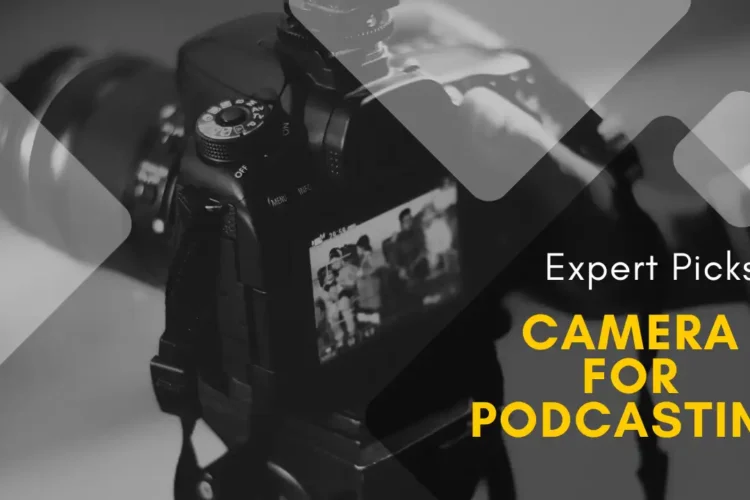
Podcasting is a fantastic way to share your stories, ideas, and expertise with the world. Starting out without an audience can be tough because it takes time and effort to attract listeners.
But don’t worry! The journey is worth it. Podcasting lets you connect deeply with your audience, build a community, and see your listener base grow over time as more people discover your show and spread the word.
So, let’s dive into how you can start your podcast and watch it flourish!
Steps to Start a Podcast with Zero Audience
- Choose Your Niche Wisely
- Plan Your Content
- Invest in Quality Equipment
- Create Compelling Content
- Guest Collaborations
- Optimize Your Podcast for SEO
- Promote Your Podcast
- Consistency is Key
- Engage with Your Audience
- Monitor and Adapt
Lets explore eery step one by one in detail :
1. Choose Your Niche Wisely
Choosing your niche wisely is key to podcast success! Start by researching trending topics that align with your interests—this will keep you excited and motivated. Pick a niche that not only fascinates you but also has room to grow. This way, you can attract a dedicated audience who’s eager to hear more. Remember, a well-chosen niche can set you apart and pave the way for your podcast to flourish.
Some popular niches now include true crime, personal finance, mental health, entrepreneurship, relationships, and health and wellness.
2. Plan Your Content
Planning your content ahead of time is essential for a successful podcast! Having a clear plan helps you stay organized and ensures you consistently deliver great episodes. Create a content calendar to map out your topics and release dates. This keeps you on track and makes the process less stressful. For your first few episodes, consider sharing your personal story, discussing hot topics in your niche, or interviewing interesting guests to hook listeners from the start. With a well-thought-out plan, you’ll be ready to captivate your audience week after week!
3. Invest in Quality Equipment
Investing in quality equipment is a game-changer for your podcast! You’ll need a good microphone, headphones, and editing software to get started.
Here are Essential Equipment:
- Microphone
- Headphones
- Pop Filter/Windscreen
- Microphone Stand/Arm
- Computer/Laptop
- Recording and Editing Software
With these essentials, you’ll be ready to produce professional-sounding episodes that keep your listeners coming back for more!
4. Create Compelling Content
Creating compelling content for your podcast is all about having a unique angle and providing real value to your listeners. Start by developing a content plan that sets your podcast apart—whether it’s exploring niche topics, sharing personal experiences, or offering expert insights. Focus on what your target audience wants to hear and how you can enrich their lives with each episode. By consistently delivering valuable content that resonates with your listeners, you’ll build a loyal following and keep them coming back for more. So, brainstorm ideas that excite you and add that special something to your podcast—it’s the key to making a lasting impression!
5. Guest Collaborations
Guest collaborations are a way to spice up your podcast and attract new listeners! Reach out to industry experts, influencers, or even peers in your field for interviews. Guests bring fresh perspectives and credibility to your show, making it more engaging and valuable to your audience. Use these collaborations strategically to tap into your guests’ fanbase and expand your reach organically. Remember, each guest brings a unique audience, so choose guests who resonate with your podcast’s theme and provide insights your listeners will love.
6. Optimize Your Podcast for SEO
SEO can help more people discover your content quickly! Start by using targeted keywords in your podcast title and description that reflect what your episodes are about. This helps search engines like Google and podcast directories like Apple Podcasts and Spotify to categorize and recommend your show to relevant listeners. Make sure your podcast description is clear and informative, using keywords naturally to improve visibility. Additionally, submitting your podcast to popular platforms ensures it’s accessible to a broader audience.
7. Promote Your Podcast
Promoting your podcast is key to building a loyal audience! Use social media platforms like Instagram, Twitter, and Facebook to share your episodes, behind-the-scenes content, and updates with your followers. Don’t hesitate to ask for feedback—it’s invaluable for improving your podcast and making it even more appealing to your audience. With consistent promotion and engagement, you’ll see your podcast community grow and thrive!
8. Consistency is Key
Consistency is your podcast’s best friend! Setting a regular publishing schedule—whether it’s weekly, bi-weekly, or monthly—helps your audience know when to expect new episodes, keeping them engaged and coming back for more. This reliability builds credibility and trust, showing your listeners that you’re committed to delivering valuable content consistently. It also helps you stay organized and focused on creating quality episodes without rushing.
9. Engage with Your Audience
Engaging with your audience is key to building a vibrant podcast community! Encourage listener interaction by incorporating Q&A segments, polls, or listener feedback into your episodes. This not only makes your content more interactive and relevant but also shows that you value their input. Take the time to respond to comments, reviews, and messages—whether it’s thanking them for their support or addressing their questions. By actively engaging with your audience, you foster a sense of connection and loyalty, turning listeners into dedicated fans who feel heard and appreciated. This interaction strengthens your podcast’s community and encourages listeners to keep coming back for more insightful conversations and shared experiences.
10. Monitor and Adapt
Monitoring and adapting are essential for growing your podcast! Use analytics tools to track key metrics like downloads, listener demographics, and engagement rates. This data provides valuable insights into what resonates with your audience and where you can improve. Continuously evaluate your strategies based on listener feedback—whether it’s through reviews, social media comments, or direct messages. Adjust your content, promotion tactics, and even episode formats accordingly to better meet your audience’s preferences and expectations.
Final Words - Start a Podcast with no Audience
In conclusion, starting a podcast without an audience may seem daunting at first, but with dedication and these insider tips, you’re well on your way to success!
Remember to choose a niche you’re passionate about, plan your content ahead of time, and invest in quality equipment within your budget. Promote your podcast actively on social media, engage with your audience regularly, and stay consistent with your publishing schedule to build trust and credibility.
Don’t forget to monitor your podcast’s performance using analytics and adapt your strategies based on listener feedback. By following these steps and staying committed to creating valuable content, you’ll steadily grow your audience and make your mark in the podcasting world. Happy podcasting!
Author
Emma Eva
Emma is an SEO expert and Content Manager at Wan.io, harnessing three years of expertise in the digital realm. Renowned for his strategic prowess, he navigates the complexities of search engine optimization with finesse, driving Geekzilla Podcast online visibility to new heights.


